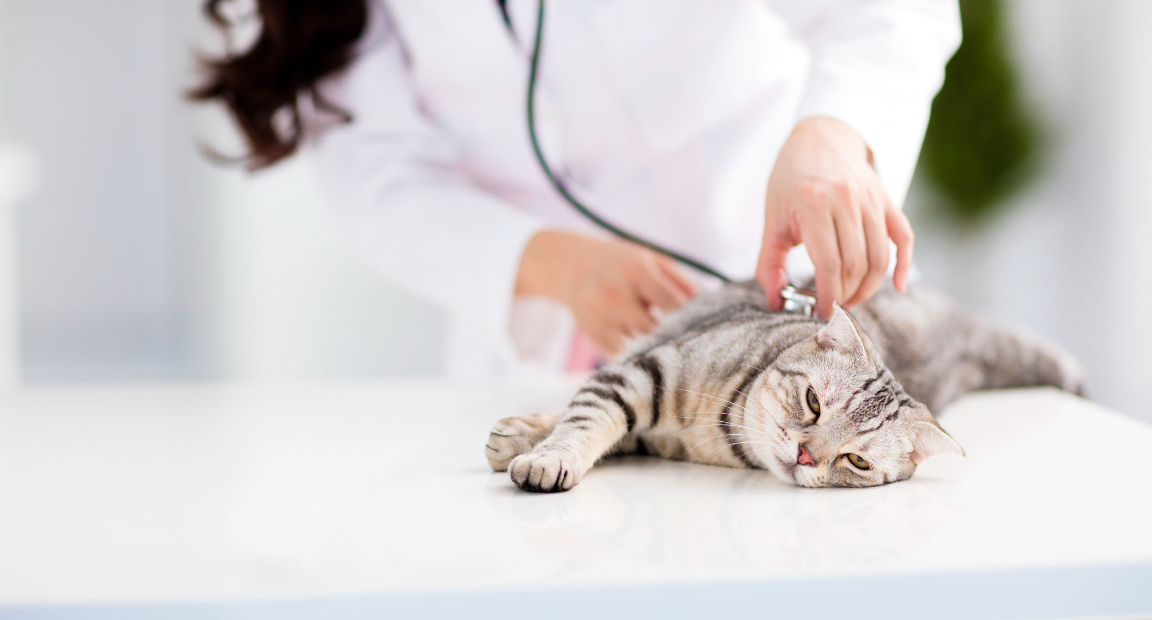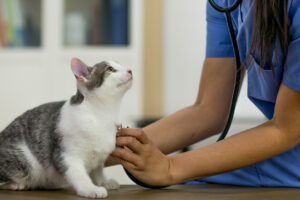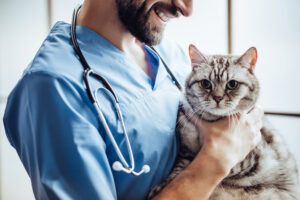What is Calicivirus?
Calicivirus, or feline calicivirus (FCV), is a highly contagious viral infection which affects cats. It belongs to the family Caliciviridae and is a common cause of respiratory disease in cats and often a component of “cat flu”. Calicivirus spreads through saliva, nasal or ocular discharge, and like many respiratory pathogens, can become aerosolised and spread through the air. The virus can also survive for some time outside of the body.
Signs & Symptoms
Like many upper respiratory viruses, signs of Calicivirus can include ocular and nasal discharge and sneezing. Oral ulcers and gingivitis-stomatitis (inflammation of the tissues in the mouth) are also quite common with Calicivirus infection, so infected cats may drool and become disinterested in food, as oral ulcers are generally painful. This can quickly lead to other complications related to not eating and drinking, such as dehydration and lethargy. Limping can also be a sign of calicivirus as the virus can cause inflammation in the joints. In severe cases, pneumonia and systemic disease can occur. Many cats who become infected with Calicivirus will become chronic carriers of the disease and asymptomatic infections can occur.
Diagnosis
In some cases, upper respiratory tract disease may be diagnosed symptomatically by the veterinarian, by examining the affected feline patient and collecting the patient history, including vaccination status, age, and history of recent boarding or contact with other infected cats. Additional tests may be recommended which may include blood screens, polymerase chain reaction (PCR) or virus isolation, to detect the presence of calicivirus. These tests may be used to help understand which viruses are involved, especially in ongoing cases.
Treatment
As for many viruses, there is no specific treatment for calicivirus, so treatment is focused on managing symptoms and providing supportive care. This may include intravenous fluid therapy to help correct dehydration, nutritional support, pain relief and anti-inflammatory drugs to keep the patient comfortable, and treating secondary infections with antibiotics.
According to PetSure data in 2022, cat flu had an average claimed cost of $288.00 and a maximum claimed cost of $8,754.
Recovery
Recovery from Calicivirus infection depends on the severity of infection and health of the feline patient. While most cats will recover within a few weeks with appropriate care and treatment, in severe or complicated cases, pneumonia or chronic stomatitis may delay recovery and require more intensive treatment.
Prevention
Prevention of Calicivirus is largely centred around great hygiene, isolation from infected cats and ensuring vaccinations are up to date. Keep all in contact surfaces and objects clean and wash hands thoroughly between handling cats, and isolate sick cats from well cats
Frequently Asked Questions
Calicivirus is species specific meaning that Feline Calicivirus typically only affects cats.
While there is no cure for calicivirus, supportive care and appropriate treatment can help manage the symptoms and aid in recovery. Some cats will go on to become chronic carriers of the virus which can last for life.
Vaccination is an important preventative measure against calicivirus. Vaccination may not be completely protective but can reduce the severity of infection.
Calicivirus is generally covered by comprehensive accidental injury and illness pet insurance policies administered by PetSure (check our brand partners at petsure.com.au/partners), unless related to a pre-existing condition or exclusion. Please refer to your policy documents and Product Disclosure Statement (PDS) for more information.
Preventative and routine items such as vaccinations, whether recommended by your veterinarian or not, are generally excluded by PetSure policies*.
Please refer to your policy documents and Product Disclosure Statement (PDS) for more information
According to PetSure data in 2022, cat flu, which often includes Calicivirus, had an average claimed cost of $288.00 and a maximum claimed cost of $8,754.
*Reimbursement for these claims would be subject to limits, such as annual benefit limits or sub-limits, benefit percentage, applicable waiting periods and any applicable excess. Cover is subject to the policy terms and conditions. You should consider the relevant Product Disclosure Statement or policy wording available from the relevant provider. Treatment relates to Calicivirus and all medically related conditions in that policy period.
References
An Update on Feline Calicivirus
Pet insurance can help by covering a portion of the eligible vet bill if the unexpected happens. Because it is difficult to predict the costs of veterinary care, it can help to have measures in place to help prepare for the unexpected. Check out our partner network and explore our policy tools to find a pet insurance policy.
Not all conditions or items are covered by Pet Insurance. Refer to the applicable Product Disclosure Statement for information about coverage and exclusions.



 Fact checked
Fact checked





